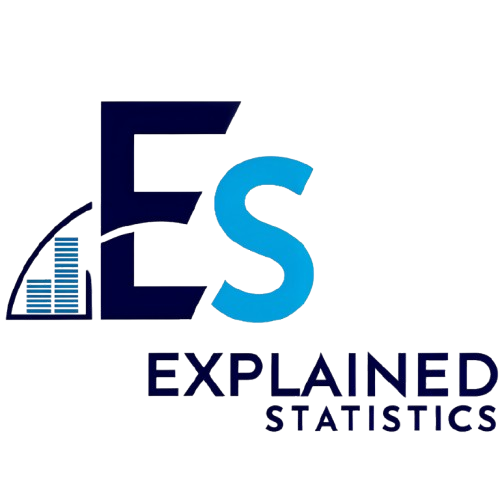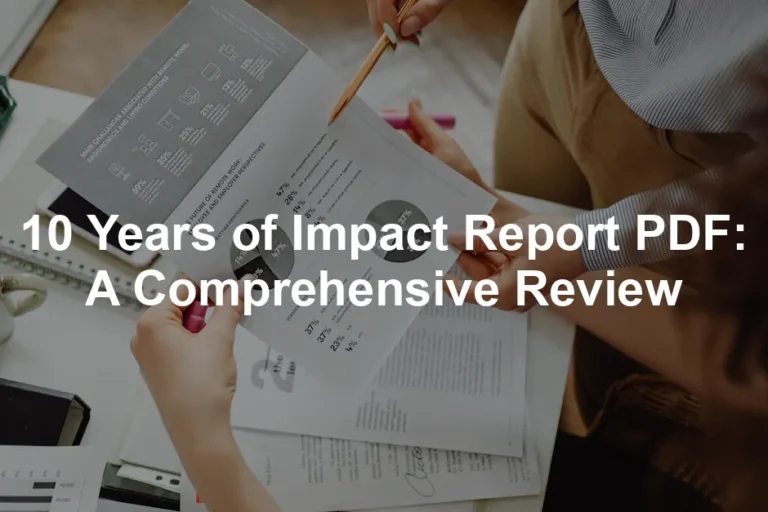To illustrate, let’s consider different types of research questions:
- Comparative Questions: “Is there a difference in test scores between students who study alone versus those who study in groups?”
Test: A t-test would compare these two independent groups’ means. - Correlational Questions: “Is there a relationship between hours spent studying and exam scores?”
Test: A Pearson correlation could explore this relationship between two continuous variables. - Predictive Questions: “Can the number of hours of exercise predict an individual’s overall health score?”
Test: A regression analysis would be fitting to assess how one variable predicts another.
When crafting your research question, it’s essential to specify the variables involved and the relationships you intend to examine. A clear question not only clarifies your purpose but also aligns your chosen statistical tests accordingly.
In conclusion, understanding your research question is paramount. It informs your entire methodology and ensures that you select the right statistical tests for meaningful insights. So, keep your questions clear, and you’ll pave the way for successful data analysis!

If you’re looking to expand your statistical knowledge, consider picking up “Naked Statistics: Stripping the Dread from the Data” by Charles Wheelan. It’s a fun read that makes statistics approachable and enjoyable!
Data Characteristics
When selecting a statistical test, understanding the types of data is crucial. There are four main types:
- Nominal: This data represents categories without a specific order. Examples include gender, color, or types of animals. Think of it as sorting your sock drawer—red socks and blue socks don’t have any rank, just distinction!
- Ordinal: Here, the data is ranked or ordered, but the intervals between ranks aren’t necessarily equal. Picture a race where first, second, and third places are clear, but the difference in time between each isn’t uniform.
- Interval: This data type has equal intervals between values, but no true zero point. Temperature in Celsius is a good example. Zero degrees doesn’t mean the absence of heat—there’s still a world of warmth below!
- Ratio: Finally, ratio data has both equal intervals and a true zero. Think weight or height; zero means there’s none of that variable present.
Understanding these categories helps you choose the right test and meet the assumptions required for valid results.
Now, let’s not forget about data distributions—those delightful ways data can show up. They can be normal or skewed, and this aspect affects how certain tests are applied. Many statistical tests assume normality, so knowing your data’s distribution is like checking the weather before heading out. You wouldn’t want to be caught in a downpour without an umbrella, right?

And if you want to dive deeper into how to deal with data, consider reading “Statistics for Dummies” by Deborah J. Rumsey. It’s a great resource to help you grasp the concepts without feeling overwhelmed!
Sample Size and Power Analysis
Sample size is another critical factor in choosing a statistical test. Larger samples generally provide more reliable estimates of the population and increase the power of the test. But what’s power, you ask? It’s the probability of correctly rejecting the null hypothesis when it is false. In simpler terms, it’s your test’s ability to spot a real effect—like finding a needle in a haystack but with a better flashlight!
A power analysis helps you determine the minimum sample size required to detect an effect of a given size at a specified significance level. If your sample size is too small, you might miss out on significant findings, leading to false negatives. Meanwhile, a sample too large may detect trivial differences that aren’t practically meaningful. It’s all about balance!
In summary, knowing your data characteristics and ensuring a suitable sample size are key to choosing the right statistical test. With these insights, you’ll be one step closer to making sense of your data without any hiccups!

Implementation of Tests
T-Test
A t-test compares the means of two groups. It’s essential to ensure that the data is normally distributed, especially when the sample size is small. When using a t-test, you can choose between an independent t-test (for comparing different groups) or a paired t-test (for the same group at different times).
Example: Imagine you want to compare test scores from two classes taught by different instructors. An independent t-test would help determine if one instructor’s students perform significantly better than the other’s.
To assist with your calculations, consider investing in a Graphing Calculator. It’s a handy tool for visualizing your data!

ANOVA
Analysis of Variance (ANOVA) is used when comparing means across three or more groups. The assumptions include normality and homogeneity of variances. If these conditions aren’t met, consider using a non-parametric alternative like the Kruskal-Wallis test.
Scenario: Let’s say a researcher wants to compare the effectiveness of three different diets on weight loss. ANOVA can reveal if at least one diet leads to a different weight-loss outcome compared to the others.
Chi-Square Test
Chi-Square tests examine relationships between categorical variables. There are two primary types: the Chi-Square Test of Independence and the Chi-Square Goodness of Fit. The former assesses whether two categorical variables are independent, while the latter determines if sample data matches a population with a specified distribution.
Example: A market researcher may want to know if there’s a relationship between gender and product preference. Using the Chi-Square Test of Independence, they can determine whether gender influences which products are favored.
For those who want to learn more about statistical methods, check out “Statistical Methods for the Social Sciences” by Alan Agresti and Barbara Finlay. It’s a great resource for understanding complex statistical concepts!

Regression Analysis
Regression analysis is used to understand relationships between variables. This method can be simple (one predictor variable) or multiple (more than one predictor). The key assumption is that the residuals of the model are normally distributed.
Scenario: A company might use regression analysis to predict sales based on advertising spend and economic indicators. This helps them understand how changes in these factors impact sales.
And to enhance your data analysis skills, consider reading “Practical Statistics for Data Scientists” by Peter Bruce and Andrew Bruce. It’s a must-read for anyone looking to apply statistics in real-world scenarios!
Each of these tests requires careful consideration of the data’s characteristics and the conditions that must be met. Ensuring you select the right test not only enhances the validity of your results but also provides clearer insights into your data.

Case Studies: Flow Chart in Action
Real-World Applications
Case studies illustrate how a statistical test flow chart can effectively guide researchers in selecting the appropriate tests for their data analysis needs. Here are a few examples showcasing this process in action.
Case Study 1: Education Research
A group of researchers aimed to evaluate the impact of a new teaching strategy on student performance. They started by identifying their variables: student grades before and after implementing the strategy. Utilizing the flow chart, they determined that a paired t-test was appropriate due to the dependent nature of their samples. The results indicated a significant improvement in grades, validating the effectiveness of the new teaching strategy.
Case Study 2: Marketing Analysis
In another scenario, a marketing team wanted to compare customer preferences for three different products. They used the flow chart to navigate through their data characteristics. With three groups involved, they opted for ANOVA. The analysis revealed that one product significantly outperformed the others, allowing the marketing team to focus their promotional efforts effectively.
Case Study 3: Healthcare Study
A healthcare study sought to understand the relationship between smoking status and lung cancer incidence. The researchers categorized their data into smokers and non-smokers. Following the flow chart, they selected the Chi-Square Test of Independence. The results indicated a strong association between smoking and lung cancer, reinforcing public health campaigns aimed at reducing smoking rates.
These case studies highlight how a statistical test flow chart serves as an invaluable tool, leading researchers to the appropriate tests based on their unique data characteristics. The outcomes not only provide actionable insights but also enhance the credibility of the research findings.

Conclusion
Using a statistical test flow chart is vital for accurate data analysis. It simplifies the selection process, ensuring researchers choose the right test for their specific needs. By following a systematic approach, you’ll gain more reliable results and insights.
Embracing flow charts can significantly enhance your research and analysis processes. They act as a roadmap in the often complex world of statistical testing. If you haven’t already, consider incorporating a flow chart into your workflow.
For further reading, resources like online courses, articles, and textbooks can deepen your understanding of statistical tests and methodologies. Equip yourself with knowledge, and make informed decisions in your data analysis journey! tips for effective data analysis in economics and statistics

If you’re interested in practical applications of data analysis, consider checking out “Data Science for Business” by Foster Provost and Tom Fawcett. It’s a great resource for understanding how to use data science in business decision-making!
FAQs
What is the difference between parametric and non-parametric tests?
Parametric tests assume that the data follows a specific distribution, typically normal distribution. Examples include the t-test and ANOVA. Non-parametric tests do not require such assumptions and are used when data doesn’t meet these requirements. Examples include the Mann-Whitney U test and the Kruskal-Wallis test.
When should I use a t-test versus ANOVA?
Use a t-test when comparing means between two groups. Opt for ANOVA when you have three or more groups to compare. For example, if you want to compare the average scores of two different teaching methods, use a t-test. If comparing scores across three different methods, ANOVA is the way to go.
How do I determine if my data meets the assumptions of a statistical test?
Common assumptions include normality, independence of observations, and homogeneity of variance. You can use statistical tests like the Shapiro-Wilk test for normality and Levene’s test for homogeneity of variance. Visual inspections, such as Q-Q plots, can also provide insights into whether assumptions are met.
What resources can I use to create my own statistical test flow chart?
Several tools can help you create flow charts, including diagrams.net, Lucidchart, and Microsoft Visio. These platforms offer user-friendly interfaces for designing flow charts tailored to your specific needs.
Is there a way to visualize complex statistical tests?
Yes! Tools like R and Python provide libraries (like ggplot2 for R or Matplotlib for Python) that allow you to create visual representations of your data analysis. Additionally, software like Tableau and Power BI can help visualize complex statistical results for easier interpretation.
Please let us know what you think about our content by leaving a comment down below!
Thank you for reading till here 🙂
All images from Pexels
Key components of a flow chart include:
- Decision Points: These are questions that require a yes or no answer. For example, “Is your data categorical or continuous?” Your answer will influence the next path you take.
- Paths: Each decision leads you down a specific route. Following these paths helps narrow down the options until you reach the final test recommendation.
- Outcomes: These are the statistical tests that fit your data’s characteristics. They could range from t-tests to ANOVA, depending on the choices made along the way.
In short, the flow chart simplifies the often overwhelming task of selecting a statistical test. It’s a visual tool that makes the decision-making process more intuitive. So, the next time you find yourself staring at a mountain of data, remember: there’s a flow chart out there ready to help you conquer it!

And for those who love visuals, consider getting a Statistical Test Flow Chart Poster. This poster can be your guiding star while you navigate your data analysis!
Navigating the Flow Chart
Using a statistical test flow chart is easier than pie—well, maybe not as tasty, but definitely more enlightening! Here’s a step-by-step guide to help you navigate this helpful tool.
1. Identify the Type of Data
First off, you need to categorize your data. Is it categorical or continuous? Categorical data includes variables that represent different categories, like favorite ice cream flavors. Continuous data, on the other hand, represents measurable quantities, like height or weight. This first step sets the stage for everything that follows.
2. Determine the Number of Variables
Next, consider how many variables you’re dealing with. Are you juggling one variable, two, or more? The number of variables will influence the statistical test you can choose. For example, a simple t-test is perfect for comparing means between two groups, while ANOVA shines when you have three or more groups to compare.
3. Identify if Data is Paired or Independent
Now, let’s get to the nitty-gritty. Are your data samples paired or independent? Paired data means that the observations are related, like measuring the same group of students before and after a special tutoring program. Independent data, however, consists of observations that are not related, like comparing two different classrooms. This distinction is crucial for selecting the right test.
4. Choose the Appropriate Test
Finally, it’s time to pick your weapon—err, I mean, test! Based on your answers to the previous questions, follow the flow chart’s paths to find the most suitable statistical test. Whether it’s a t-test, ANOVA, or chi-square test, the flow chart will guide you like a trusty sidekick in your research journey.
Remember, a flow chart is not just a series of questions; it’s a powerful decision-making tool. With it, you’ll turn the daunting task of selecting a statistical test into a straightforward and even enjoyable experience!

Key Considerations When Choosing a Statistical Test
Understanding Your Research Question
Formulating a clear research question is the cornerstone of effective statistical analysis. A well-defined question leads to focused hypotheses and appropriate statistical tests. Think of it as the GPS for your research journey—it keeps you on track!
To illustrate, let’s consider different types of research questions:
- Comparative Questions: “Is there a difference in test scores between students who study alone versus those who study in groups?”
Test: A t-test would compare these two independent groups’ means. - Correlational Questions: “Is there a relationship between hours spent studying and exam scores?”
Test: A Pearson correlation could explore this relationship between two continuous variables. - Predictive Questions: “Can the number of hours of exercise predict an individual’s overall health score?”
Test: A regression analysis would be fitting to assess how one variable predicts another.
When crafting your research question, it’s essential to specify the variables involved and the relationships you intend to examine. A clear question not only clarifies your purpose but also aligns your chosen statistical tests accordingly.
In conclusion, understanding your research question is paramount. It informs your entire methodology and ensures that you select the right statistical tests for meaningful insights. So, keep your questions clear, and you’ll pave the way for successful data analysis!

If you’re looking to expand your statistical knowledge, consider picking up “Naked Statistics: Stripping the Dread from the Data” by Charles Wheelan. It’s a fun read that makes statistics approachable and enjoyable!
Data Characteristics
When selecting a statistical test, understanding the types of data is crucial. There are four main types:
- Nominal: This data represents categories without a specific order. Examples include gender, color, or types of animals. Think of it as sorting your sock drawer—red socks and blue socks don’t have any rank, just distinction!
- Ordinal: Here, the data is ranked or ordered, but the intervals between ranks aren’t necessarily equal. Picture a race where first, second, and third places are clear, but the difference in time between each isn’t uniform.
- Interval: This data type has equal intervals between values, but no true zero point. Temperature in Celsius is a good example. Zero degrees doesn’t mean the absence of heat—there’s still a world of warmth below!
- Ratio: Finally, ratio data has both equal intervals and a true zero. Think weight or height; zero means there’s none of that variable present.
Understanding these categories helps you choose the right test and meet the assumptions required for valid results.
Now, let’s not forget about data distributions—those delightful ways data can show up. They can be normal or skewed, and this aspect affects how certain tests are applied. Many statistical tests assume normality, so knowing your data’s distribution is like checking the weather before heading out. You wouldn’t want to be caught in a downpour without an umbrella, right?

And if you want to dive deeper into how to deal with data, consider reading “Statistics for Dummies” by Deborah J. Rumsey. It’s a great resource to help you grasp the concepts without feeling overwhelmed!
Sample Size and Power Analysis
Sample size is another critical factor in choosing a statistical test. Larger samples generally provide more reliable estimates of the population and increase the power of the test. But what’s power, you ask? It’s the probability of correctly rejecting the null hypothesis when it is false. In simpler terms, it’s your test’s ability to spot a real effect—like finding a needle in a haystack but with a better flashlight!
A power analysis helps you determine the minimum sample size required to detect an effect of a given size at a specified significance level. If your sample size is too small, you might miss out on significant findings, leading to false negatives. Meanwhile, a sample too large may detect trivial differences that aren’t practically meaningful. It’s all about balance!
In summary, knowing your data characteristics and ensuring a suitable sample size are key to choosing the right statistical test. With these insights, you’ll be one step closer to making sense of your data without any hiccups!

Implementation of Tests
T-Test
A t-test compares the means of two groups. It’s essential to ensure that the data is normally distributed, especially when the sample size is small. When using a t-test, you can choose between an independent t-test (for comparing different groups) or a paired t-test (for the same group at different times).
Example: Imagine you want to compare test scores from two classes taught by different instructors. An independent t-test would help determine if one instructor’s students perform significantly better than the other’s.
To assist with your calculations, consider investing in a Graphing Calculator. It’s a handy tool for visualizing your data!

ANOVA
Analysis of Variance (ANOVA) is used when comparing means across three or more groups. The assumptions include normality and homogeneity of variances. If these conditions aren’t met, consider using a non-parametric alternative like the Kruskal-Wallis test.
Scenario: Let’s say a researcher wants to compare the effectiveness of three different diets on weight loss. ANOVA can reveal if at least one diet leads to a different weight-loss outcome compared to the others.
Chi-Square Test
Chi-Square tests examine relationships between categorical variables. There are two primary types: the Chi-Square Test of Independence and the Chi-Square Goodness of Fit. The former assesses whether two categorical variables are independent, while the latter determines if sample data matches a population with a specified distribution.
Example: A market researcher may want to know if there’s a relationship between gender and product preference. Using the Chi-Square Test of Independence, they can determine whether gender influences which products are favored.
For those who want to learn more about statistical methods, check out “Statistical Methods for the Social Sciences” by Alan Agresti and Barbara Finlay. It’s a great resource for understanding complex statistical concepts!

Regression Analysis
Regression analysis is used to understand relationships between variables. This method can be simple (one predictor variable) or multiple (more than one predictor). The key assumption is that the residuals of the model are normally distributed.
Scenario: A company might use regression analysis to predict sales based on advertising spend and economic indicators. This helps them understand how changes in these factors impact sales.
And to enhance your data analysis skills, consider reading “Practical Statistics for Data Scientists” by Peter Bruce and Andrew Bruce. It’s a must-read for anyone looking to apply statistics in real-world scenarios!
Each of these tests requires careful consideration of the data’s characteristics and the conditions that must be met. Ensuring you select the right test not only enhances the validity of your results but also provides clearer insights into your data.

Case Studies: Flow Chart in Action
Real-World Applications
Case studies illustrate how a statistical test flow chart can effectively guide researchers in selecting the appropriate tests for their data analysis needs. Here are a few examples showcasing this process in action.
Case Study 1: Education Research
A group of researchers aimed to evaluate the impact of a new teaching strategy on student performance. They started by identifying their variables: student grades before and after implementing the strategy. Utilizing the flow chart, they determined that a paired t-test was appropriate due to the dependent nature of their samples. The results indicated a significant improvement in grades, validating the effectiveness of the new teaching strategy.
Case Study 2: Marketing Analysis
In another scenario, a marketing team wanted to compare customer preferences for three different products. They used the flow chart to navigate through their data characteristics. With three groups involved, they opted for ANOVA. The analysis revealed that one product significantly outperformed the others, allowing the marketing team to focus their promotional efforts effectively.
Case Study 3: Healthcare Study
A healthcare study sought to understand the relationship between smoking status and lung cancer incidence. The researchers categorized their data into smokers and non-smokers. Following the flow chart, they selected the Chi-Square Test of Independence. The results indicated a strong association between smoking and lung cancer, reinforcing public health campaigns aimed at reducing smoking rates.
These case studies highlight how a statistical test flow chart serves as an invaluable tool, leading researchers to the appropriate tests based on their unique data characteristics. The outcomes not only provide actionable insights but also enhance the credibility of the research findings.

Conclusion
Using a statistical test flow chart is vital for accurate data analysis. It simplifies the selection process, ensuring researchers choose the right test for their specific needs. By following a systematic approach, you’ll gain more reliable results and insights.
Embracing flow charts can significantly enhance your research and analysis processes. They act as a roadmap in the often complex world of statistical testing. If you haven’t already, consider incorporating a flow chart into your workflow.
For further reading, resources like online courses, articles, and textbooks can deepen your understanding of statistical tests and methodologies. Equip yourself with knowledge, and make informed decisions in your data analysis journey! tips for effective data analysis in economics and statistics

If you’re interested in practical applications of data analysis, consider checking out “Data Science for Business” by Foster Provost and Tom Fawcett. It’s a great resource for understanding how to use data science in business decision-making!
FAQs
Please let us know what you think about our content by leaving a comment down below!
Thank you for reading till here 🙂
All images from Pexels
Introduction
Statistical tests are the backbone of data analysis. They allow researchers to validate their hypotheses and draw meaningful conclusions from data. Just think about it: without these tests, data would be like a jigsaw puzzle missing essential pieces. You could see shapes and colors, but you’d never know the complete picture!
Enter the statistical test flow chart. This handy tool acts like a GPS for researchers, guiding them through the maze of statistical tests. With so many options—t-tests, ANOVA, chi-square tests—how does one choose? A flow chart can streamline this decision-making process, turning confusion into clarity.
In this article, we’ll break down the types of statistical tests available, and how to select the right one based on your data characteristics. Whether you’re a seasoned statistician or a curious newbie, this guide will help you navigate the often-overwhelming world of statistical analysis. Get ready to become a test-choosing pro!

Understanding Statistical Tests
What is a Statistical Test?
Statistical tests serve as a critical tool in hypothesis testing. They evaluate assumptions about a population based on sample data. Imagine you’re at a party, and you overhear a conversation about who’s the best dancer. You’d need a way to determine if your friends are just being nice or if someone truly has the moves! Statistical tests do just that—help us decipher relationships and differences.
At the heart of every statistical test lies the null hypothesis (H0) and the alternative hypothesis (H1). The null hypothesis suggests no effect or difference exists, while the alternative proposes the opposite. For instance, if you’re testing whether a new teaching method improves scores, the null would state that it doesn’t, while the alternative would claim that it does.
To make these determinations, we rely on p-values and test statistics. A p-value tells us how likely our observed results are if the null hypothesis is true. If the p-value is lower than a predetermined significance level (often 0.05), we reject the null hypothesis. It’s like finding out that the party really does have the best dancer—your friends weren’t just being polite!
In short, statistical tests are the essential tools that help us make sense of our data, providing a framework for understanding the underlying patterns and relationships. The next step? Choosing the right test for your specific data situation!
If you’re looking to deepen your understanding of data and statistics, check out “The Art of Statistics: Learning from Data” by David Spiegelhalter. This book will help you see the beauty in data and make sense of the numbers!

The Statistical Test Flow Chart
Overview of the Flow Chart
A statistical test flow chart is like a trusty sidekick in the chaotic world of data analysis. It helps researchers choose the right statistical test based on their data characteristics. Think of it as a decision-making map leading you to clearer conclusions.
At its core, the flow chart consists of various decision points. These are the crossroads where you’ll answer critical questions about your data. Each path you take leads to different outcomes, guiding you to select the most appropriate statistical test.
Key components of a flow chart include:
- Decision Points: These are questions that require a yes or no answer. For example, “Is your data categorical or continuous?” Your answer will influence the next path you take.
- Paths: Each decision leads you down a specific route. Following these paths helps narrow down the options until you reach the final test recommendation.
- Outcomes: These are the statistical tests that fit your data’s characteristics. They could range from t-tests to ANOVA, depending on the choices made along the way.
In short, the flow chart simplifies the often overwhelming task of selecting a statistical test. It’s a visual tool that makes the decision-making process more intuitive. So, the next time you find yourself staring at a mountain of data, remember: there’s a flow chart out there ready to help you conquer it!

And for those who love visuals, consider getting a Statistical Test Flow Chart Poster. This poster can be your guiding star while you navigate your data analysis!
Navigating the Flow Chart
Using a statistical test flow chart is easier than pie—well, maybe not as tasty, but definitely more enlightening! Here’s a step-by-step guide to help you navigate this helpful tool.
1. Identify the Type of Data
First off, you need to categorize your data. Is it categorical or continuous? Categorical data includes variables that represent different categories, like favorite ice cream flavors. Continuous data, on the other hand, represents measurable quantities, like height or weight. This first step sets the stage for everything that follows.
2. Determine the Number of Variables
Next, consider how many variables you’re dealing with. Are you juggling one variable, two, or more? The number of variables will influence the statistical test you can choose. For example, a simple t-test is perfect for comparing means between two groups, while ANOVA shines when you have three or more groups to compare.
3. Identify if Data is Paired or Independent
Now, let’s get to the nitty-gritty. Are your data samples paired or independent? Paired data means that the observations are related, like measuring the same group of students before and after a special tutoring program. Independent data, however, consists of observations that are not related, like comparing two different classrooms. This distinction is crucial for selecting the right test.
4. Choose the Appropriate Test
Finally, it’s time to pick your weapon—err, I mean, test! Based on your answers to the previous questions, follow the flow chart’s paths to find the most suitable statistical test. Whether it’s a t-test, ANOVA, or chi-square test, the flow chart will guide you like a trusty sidekick in your research journey.
Remember, a flow chart is not just a series of questions; it’s a powerful decision-making tool. With it, you’ll turn the daunting task of selecting a statistical test into a straightforward and even enjoyable experience!

Key Considerations When Choosing a Statistical Test
Understanding Your Research Question
Formulating a clear research question is the cornerstone of effective statistical analysis. A well-defined question leads to focused hypotheses and appropriate statistical tests. Think of it as the GPS for your research journey—it keeps you on track!
To illustrate, let’s consider different types of research questions:
- Comparative Questions: “Is there a difference in test scores between students who study alone versus those who study in groups?”
Test: A t-test would compare these two independent groups’ means. - Correlational Questions: “Is there a relationship between hours spent studying and exam scores?”
Test: A Pearson correlation could explore this relationship between two continuous variables. - Predictive Questions: “Can the number of hours of exercise predict an individual’s overall health score?”
Test: A regression analysis would be fitting to assess how one variable predicts another.
When crafting your research question, it’s essential to specify the variables involved and the relationships you intend to examine. A clear question not only clarifies your purpose but also aligns your chosen statistical tests accordingly.
In conclusion, understanding your research question is paramount. It informs your entire methodology and ensures that you select the right statistical tests for meaningful insights. So, keep your questions clear, and you’ll pave the way for successful data analysis!

If you’re looking to expand your statistical knowledge, consider picking up “Naked Statistics: Stripping the Dread from the Data” by Charles Wheelan. It’s a fun read that makes statistics approachable and enjoyable!
Data Characteristics
When selecting a statistical test, understanding the types of data is crucial. There are four main types:
- Nominal: This data represents categories without a specific order. Examples include gender, color, or types of animals. Think of it as sorting your sock drawer—red socks and blue socks don’t have any rank, just distinction!
- Ordinal: Here, the data is ranked or ordered, but the intervals between ranks aren’t necessarily equal. Picture a race where first, second, and third places are clear, but the difference in time between each isn’t uniform.
- Interval: This data type has equal intervals between values, but no true zero point. Temperature in Celsius is a good example. Zero degrees doesn’t mean the absence of heat—there’s still a world of warmth below!
- Ratio: Finally, ratio data has both equal intervals and a true zero. Think weight or height; zero means there’s none of that variable present.
Understanding these categories helps you choose the right test and meet the assumptions required for valid results.
Now, let’s not forget about data distributions—those delightful ways data can show up. They can be normal or skewed, and this aspect affects how certain tests are applied. Many statistical tests assume normality, so knowing your data’s distribution is like checking the weather before heading out. You wouldn’t want to be caught in a downpour without an umbrella, right?

And if you want to dive deeper into how to deal with data, consider reading “Statistics for Dummies” by Deborah J. Rumsey. It’s a great resource to help you grasp the concepts without feeling overwhelmed!
Sample Size and Power Analysis
Sample size is another critical factor in choosing a statistical test. Larger samples generally provide more reliable estimates of the population and increase the power of the test. But what’s power, you ask? It’s the probability of correctly rejecting the null hypothesis when it is false. In simpler terms, it’s your test’s ability to spot a real effect—like finding a needle in a haystack but with a better flashlight!
A power analysis helps you determine the minimum sample size required to detect an effect of a given size at a specified significance level. If your sample size is too small, you might miss out on significant findings, leading to false negatives. Meanwhile, a sample too large may detect trivial differences that aren’t practically meaningful. It’s all about balance!
In summary, knowing your data characteristics and ensuring a suitable sample size are key to choosing the right statistical test. With these insights, you’ll be one step closer to making sense of your data without any hiccups!

Implementation of Tests
T-Test
A t-test compares the means of two groups. It’s essential to ensure that the data is normally distributed, especially when the sample size is small. When using a t-test, you can choose between an independent t-test (for comparing different groups) or a paired t-test (for the same group at different times).
Example: Imagine you want to compare test scores from two classes taught by different instructors. An independent t-test would help determine if one instructor’s students perform significantly better than the other’s.
To assist with your calculations, consider investing in a Graphing Calculator. It’s a handy tool for visualizing your data!

ANOVA
Analysis of Variance (ANOVA) is used when comparing means across three or more groups. The assumptions include normality and homogeneity of variances. If these conditions aren’t met, consider using a non-parametric alternative like the Kruskal-Wallis test.
Scenario: Let’s say a researcher wants to compare the effectiveness of three different diets on weight loss. ANOVA can reveal if at least one diet leads to a different weight-loss outcome compared to the others.
Chi-Square Test
Chi-Square tests examine relationships between categorical variables. There are two primary types: the Chi-Square Test of Independence and the Chi-Square Goodness of Fit. The former assesses whether two categorical variables are independent, while the latter determines if sample data matches a population with a specified distribution.
Example: A market researcher may want to know if there’s a relationship between gender and product preference. Using the Chi-Square Test of Independence, they can determine whether gender influences which products are favored.
For those who want to learn more about statistical methods, check out “Statistical Methods for the Social Sciences” by Alan Agresti and Barbara Finlay. It’s a great resource for understanding complex statistical concepts!

Regression Analysis
Regression analysis is used to understand relationships between variables. This method can be simple (one predictor variable) or multiple (more than one predictor). The key assumption is that the residuals of the model are normally distributed.
Scenario: A company might use regression analysis to predict sales based on advertising spend and economic indicators. This helps them understand how changes in these factors impact sales.
And to enhance your data analysis skills, consider reading “Practical Statistics for Data Scientists” by Peter Bruce and Andrew Bruce. It’s a must-read for anyone looking to apply statistics in real-world scenarios!
Each of these tests requires careful consideration of the data’s characteristics and the conditions that must be met. Ensuring you select the right test not only enhances the validity of your results but also provides clearer insights into your data.

Case Studies: Flow Chart in Action
Real-World Applications
Case studies illustrate how a statistical test flow chart can effectively guide researchers in selecting the appropriate tests for their data analysis needs. Here are a few examples showcasing this process in action.
Case Study 1: Education Research
A group of researchers aimed to evaluate the impact of a new teaching strategy on student performance. They started by identifying their variables: student grades before and after implementing the strategy. Utilizing the flow chart, they determined that a paired t-test was appropriate due to the dependent nature of their samples. The results indicated a significant improvement in grades, validating the effectiveness of the new teaching strategy.
Case Study 2: Marketing Analysis
In another scenario, a marketing team wanted to compare customer preferences for three different products. They used the flow chart to navigate through their data characteristics. With three groups involved, they opted for ANOVA. The analysis revealed that one product significantly outperformed the others, allowing the marketing team to focus their promotional efforts effectively.
Case Study 3: Healthcare Study
A healthcare study sought to understand the relationship between smoking status and lung cancer incidence. The researchers categorized their data into smokers and non-smokers. Following the flow chart, they selected the Chi-Square Test of Independence. The results indicated a strong association between smoking and lung cancer, reinforcing public health campaigns aimed at reducing smoking rates.
These case studies highlight how a statistical test flow chart serves as an invaluable tool, leading researchers to the appropriate tests based on their unique data characteristics. The outcomes not only provide actionable insights but also enhance the credibility of the research findings.

Conclusion
Using a statistical test flow chart is vital for accurate data analysis. It simplifies the selection process, ensuring researchers choose the right test for their specific needs. By following a systematic approach, you’ll gain more reliable results and insights.
Embracing flow charts can significantly enhance your research and analysis processes. They act as a roadmap in the often complex world of statistical testing. If you haven’t already, consider incorporating a flow chart into your workflow.
For further reading, resources like online courses, articles, and textbooks can deepen your understanding of statistical tests and methodologies. Equip yourself with knowledge, and make informed decisions in your data analysis journey! tips for effective data analysis in economics and statistics

If you’re interested in practical applications of data analysis, consider checking out “Data Science for Business” by Foster Provost and Tom Fawcett. It’s a great resource for understanding how to use data science in business decision-making!
FAQs
Please let us know what you think about our content by leaving a comment down below!
Thank you for reading till here 🙂
All images from Pexels




